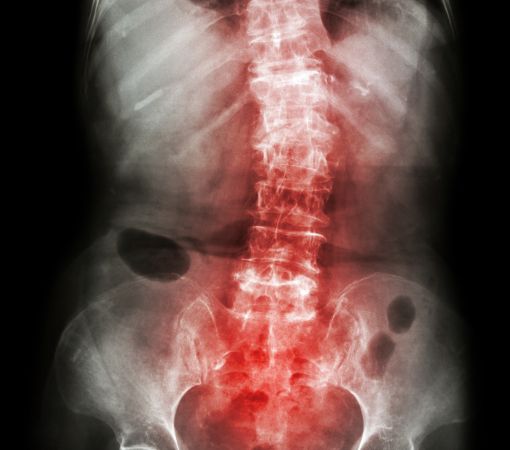Spine Surgeon
Doctors for Spondylitis Treatment in Mumbai
Spondylosis
Spondylosis, also known as spinal osteoarthritis or degenerative joint disease of the spine, is a condition characterized by the degeneration of the vertebral discs and facet joints in the spine. It is a common age-related condition that occurs as the spinal discs and joints experience wear and tear over time. The degeneration in spondylosis can lead to various changes in the spine, including the formation of bone spurs (osteophytes), thickening of ligaments, and the breakdown of cartilage in the intervertebral discs. Severe cases may require surgical intervention to address specific issues, such as decompression or fusion procedures.
What are the causes and symptoms of spondylosis?
Causes of spondylosis:
- Age: Spondylosis is primarily an age-related condition, with the natural wear and tear on the spine over time contributing to its development.
Genetics: Genetic factors may influence an individual’s susceptibility to spondylosis. - Repetitive Motion: Activities or occupations involving repetitive movements or stress on the spine can contribute to the degeneration of vertebral discs and joints.
- Injury or Trauma: Past injuries or trauma to the spine can accelerate the degenerative changes associated with spondylosis.
- Smoking: Smoking has been linked to an increased risk of spondylosis, potentially due to its negative impact on blood supply to the spine.
- Obesity: Excess body weight places additional stress on the spine, potentially accelerating the degeneration of spinal structures.
Symptoms of spondylosis:
- Pain: Chronic pain in the affected area of the spine, often described as a dull ache.
- Stiffness: Stiffness and reduced flexibility in the spine, particularly after periods of inactivity.
- Reduced Range of Motion: Difficulty bending, twisting, or performing certain movements due to the degeneration of spinal joints.
- Numbness and Tingling: Radiating sensations such as numbness or tingling, especially if nerves are compressed.
- Muscle Weakness: Weakness in the muscles associated with the affected spinal segment.
- Headaches: In some cases, spondylosis in the cervical spine may contribute to headaches, especially at the base of the skull.
- Loss of Bladder or Bowel Control: Severe cases may lead to compression of the spinal cord, resulting in the rare occurrence of loss of bladder or bowel control.
How to diagnose spondylosis?
- Blood Tests: While there are no specific blood tests for spondylosis, blood tests may be conducted to rule out other conditions, such as inflammatory arthritis or infections.
- X-rays: X-rays can reveal the presence of bone spurs, narrowing of the disc space, and changes in the vertebral structure, providing an initial assessment of spinal degeneration.
- MRI (Magnetic Resonance Imaging): This imaging technique provides detailed images of soft tissues, including discs, nerves, and ligaments. It can help identify herniated discs, spinal stenosis, and nerve compression.
- CT Scan (Computed Tomography): CT scans offer detailed cross-sectional images of the spine, providing additional information about bone structures and abnormalities.
- Electromyography (EMG) and Nerve Conduction Studies (NCS): These tests assess nerve function and can help determine if nerve compression or damage is contributing to symptoms.
What is the complication of spondylosis?
- Spinal Nerve Injury: Spondylosis can lead to compression or irritation of spinal nerves, resulting in pain, tingling, or numbness in the affected areas. Severe cases may cause functional impairment.
- Neck Injuries: The degeneration of spinal discs in spondylosis may contribute to neck injuries, affecting the cervical spine’s stability and potentially causing discomfort, stiffness, or reduced mobility.
- Paralysis: In rare and severe instances, advanced spondylosis with spinal cord involvement may lead to paralysis. This occurs when the compression or damage to the spinal cord affects nerve signals, impacting motor function and sensation. Early diagnosis and intervention are crucial to prevent such complications.
What is the treatment for spondylosis?
Medications:
- Pain Relievers: Nonsteroidal anti-inflammatory drugs (NSAIDs) can help manage pain and reduce inflammation. Muscle relaxants may be prescribed to alleviate muscle spasms associated with spondylosis.
Heat and Cold Therapy:
- Applying heat packs or cold compresses to the affected area can provide relief from pain and reduce inflammation.
Activity Modification:
- Adjusting daily activities and avoiding movements that worsen symptoms can help prevent further stress on the spine.
Bracing:
Supportive braces may be recommended to provide stability and alleviate pressure on the spine during certain activities.
Injections:
Epidural steroid injections or facet joint injections can be administered to reduce inflammation and provide temporary pain relief.
What is the surgical treatment for spondylosis?
- Laminectomy
- Discectomy
- Osteophyte Removal
- Spinal fusion
- Disc replacement
At Synapse Spine, our dedicated team of spine specialists in Mumbai offers advanced diagnostics and Spondylitis Treatment in Mumbai options for spondylosis. Schedule your appointment today.

